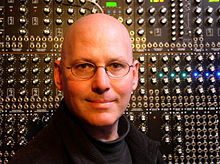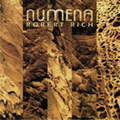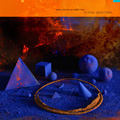The Reality of Depending on True Fans
[Translations: Japanese, Portuguese]
I have been researching new business models for artists working in the low end of the long tail. How can one make a living in a micro-niche? Is it even possible, particularly in this realm of no-cost copies? I proposed the idea of artists directly cultivating 1000 True Fans, which I wrote up in a previous post. It was a nice thesis that got a lot of blog-attention, but it was short on actual data. I solicited real numbers from those who wrote me, and I also sought out others who had a reputation for thriving on a dedicated fan base, and asked them to share their experiences.

One of the artists I contacted was musician Robert Rich, whom I knew only as a fan (but not a True Fan). Rich was an early pioneer in ambient music, and a force in the Bay Area new age music scene in the early 1980s. He’s prolific, issuing about 40 albums in the past 20 years, many in collaboration with other ambient musicians. Among his earliest albums was “Numena”, which made his reputation, and among his latest is “Eleven Questions”, which was recorded with colleagues in a seven day burst at his home studio.


Robert Rich was one of the first professional musicians to start dealing directly with his fans via his own website, which is why I contacted him. He wrote an extremely candid, insightful and thorough reply to my query. He tempers my enthusiasm for 1000 True Fans with a cautionary realism borne from actually trying the idea. The summary of his experience is so pertinent and detailed that I felt was worth posting in full. With his permission, it follows, slightly edited.
I agree strongly with your basic thesis [of a thousand True Fans], that artists can survive on the cusp of the long tail by nurturing the help of dedicated fans; but perhaps I can modulate your welcome optimism with a light dose of realism, tempered by some personal reflections.
I have operated on a premise similar to yours for almost 30 years now, before the internet made the idea more feasible. I wanted to make the sort of uncompromising quiet introspective music that moved me deeply when I first heard others do it back in the mid ’70’s. Because of the lingering aftermath of the popularization of psychedelic culture, certain memes leaked out from the avant garde into pop culture, and publishers from the old model were willing to try marketing experimental art-forms to the mainstream. Thus, into the mind of a suburban adolescent growing up in Silicon Valley, merged the unlikely combination of European space-music, minimalism, baroque, world music and industrial/punk, most of which received the benefits of worldwide distribution and marketing – even though we all considered it “underground” at the time.
That means, I grew up as a benefactor of the old system, before demographic marketing analysis helped to cripple the spread of radical thought across subcultural boundaries. I realized from this leakage of experimental culture into the mainstream, that I wanted to be an artist like the ones that moved me deeply. I wanted to speak my personal truth, regardless of the cost. I wanted to serve the role of a modern shaman, while embracing the complexities and ironies of our modern world.
When one sets a course like this, one quickly ponders the financial realities of obscurity. I remember telling myself when I was about 15, “If I can move one person deeply, that’s better than entertaining thousands of people but leaving nothing meaningful behind.” That’s the long tail talking. I suppose when you multiply this idea by a thousand, you have your thesis.
I began self-publishing my music in 1981, struggling to get paid from slippery distributors, trying to keep track of all the shops where I had my albums on consignment. I was relieved over the years when a couple small labels showed interest in helping me, and I could avail myself of their infrastructure. I think I benefitted immensely from this exposure, through labels like Hearts of Space and smaller ones in Europe. I feel in retrospect like I snuck in under the collapsing framework of independent distribution, at a time where small companies could cast a medium-sized fishing net, to catch the interest of listeners who would otherwise never have known they liked this type of music.
If it weren’t for that brief window of exposure, I doubt I would have my “1,000 True Fans” and I would probably have kept my day job. If I hadn’t also developed skills in audio engineering and mastering, I would be hungry indeed. If it weren’t for the expansion of the internet and new means of distribution and promotion, I would have given up a long time ago. In this sense, I agree wholeheartedly that new technologies have opened the door for artists like me to survive. But it’s a constant struggle.
The sort of artist who survives at the long tail is the sort who would be happy doing nothing else, who willingly sacrifices security and comfort for the chance to communicate something meaningful, hoping to catch the attention of those few in the world who seek what they also find meaningful. It’s a somewhat solitary existence, a bit like a lighthouse keeper throwing a beam out into the darkness, in faith that this action might help someone unseen.
Now in my mid-forties, I still drive myself around the country for a few months every year or so, playing small concerts that range in audience from 30 to 300 people. I’m my own booking agent, my own manager, my own contract attorney, my own driver, my own roadie. I sleep on people’s couches, or occasionally enjoy the luxuries of Motel 6.
In your article you quote the term “microcelebrities” which rings ironically true to me. I suppose I experience a bit of that, when some of the 600 people whom I see on tour come up to me after a show and tell me that my music is very important to them, that it saved their life, that they can’t imagine why I’m not performing in posh 3,000 seat theaters rather than this art gallery or that planetarium or library.
In reality the life of a “microcelebrity” resembles more the fate of Sisyphus, whose boulder rolls back down the mountain every time he reaches the summit. After every tour I feel exhausted but empowered by the thought that a few people really care a lot about this music. Yet, a few months later all is quiet again and CD/downoad sales slow down again. If I take the time to concentrate for a year on what I hope to be a breakthrough album, that time of silence widens out into a gaping hole and interest seems to fade. When I finally do release something that I feel to be a bold new direction, I manage only to sell it to the same 1,000 True Fans. The boulder sits back at the bottom of the mountain and it’s time to start rolling it up again.
So let’s look a bit at the finances. If I can make about $5-$10 per download or directly sold CD, and I sell 1000, I clear a maximum of $10,000 for that year’s effort. That’s not a living. Let’s say, after 20 concerts I net about $10,000 for three to four months worth of full time effort. That’s not a living.
In my case I’m lucky. I can can augment that paltry income through some of the added benefits of “microcelebrity” including licensing fees for sample clearance and film use rights, sound design libraries, and supplemental income from studio mastering and engineering fees. So, I make about as much money as our local garbage man; and I don’t smell as bad after a day of work. (Note that if copyright laws vanished then much of that trickle of supplemental income would dry up, so you might imagine I have mixed feelings about both sides of the free-information debate.)
Thanks to the internet, I am making more money now, selling directly to 1000 True Fans, than I was during the days on Hearts of Space selling 20,000 – 50,000 copies. But had I not benefitted from the immense promotional effort that it took for HOS to sell those albums, I probably wouldn’t be surviving today as a full time artist.
I have about 600 “true fans” and 2000 seriously following listeners… more on the fringe perhaps. My database has about 3,000 names but I only hear from most of these people every few years. Occasionally someone new shows up and buys everything I ever made. It’s not a simple answer. For example I know I have at least 500+ serious fans in Russia who never paid me for anything, because they get it all as bootlegs. My 4 or 5 “True Fans” in Russia inform me of these things. Many “fans” don’t feel compelled to pay for the art that moves them, or perhaps they cannot pay because of economic circumstances or the inverse laws of convenience.
The number of incoming new “fans” roughly matches attrition, perhaps. I am certainly able to communicate more directly with each individual, but that also means I have less time in the day to actually create new art (half the day doing email is not unusual.) Digital distribution seems to lower perceived value and desirability. Ease of access reduces any sense that it’s special or personal. Compressed audio quality and lack of physical artwork create the sense of a lowering in collectible value. I try hard to counteract these forces with high quality audio and informing listeners about the importance of the source… but people don’t always think about the details.
A further caveat: it’s easy to get trapped into the expectations of these True Fans, and with such a tenuous income stream, an artist risks poverty by pushing too far beyond the boundaries of style or preconceptions. I suppose I have a bit of a reputation for being one of those divergent – perhaps unpredictable – artists, and from that perspective I see a bit of a Catch 22 between ignoring those expectations or pandering to them. If we play to the same 1000 people, and keep doing the same basic thing, eventually the Fans become sated and don’t feel a need to purchase this year’s model, when it’s almost identical to last year’s but in a slightly different shade of black. Yet when the Fans’ Favorite Artist starts pushing past the comfort zone of what made them True Fans to begin with, they are just as likely to move their attention onwards within the box that makes them comfortable. Damned if you do or don’t.
I don’t want to be a tadpole in a shrinking puddle. When the audience is so small, one consequence of specialization is extinction. I’ll try to explain.
Evolutionary biology shows us one metaphor for this trap of stylistic boundaries, in terms of species diversity and inbreeding (ref. E.O. Wilson). When a species sub-population becomes isolated, its traits start to diverge from the larger group to eventually form a new species. Yet under these conditions of isolation, genetic diversity can decrease and the new environmentally specialized species becomes more easily threatened by environmental changes. The larger the population, the less risk it faces of inbreeding. If that population stays connected to the main group of its species, it has the least chance of overspecialization and the most chance for survival in multiple environments.
This metaphor becomes relevant to Artists and True Fans because our culture can get obsessed with ideas of style and demographic. When an artist relies on such intense personal commitmen from such a small population, it’s like an animal that relies solely upon the fruit of one tree to survive. This is a recipe for extinction. Distinctions between demographics resemble mountain ranges set up to divide one population from another. I prefer a world where no barriers exist between audiences as they define themselves and the art they love. I want a world of mutts and cross-polinators. I would feel more comfortable if I thought I had a broader base of people interested in my work, not just preaching to the choir.
Indeed the internet is a tool that allows artists to broaden their audience, and allows individuals in the audience to broaden their tastes, to explore new styles, to seek that which surprises them – if they want surprise, that is. The internet can also give us tools more narrowly to target specific demographics and to strengthen those assumptions that prevent acceptance of new ideas, nudging people towards algorithmically determined tastes or styles. Companies can use demographic models and track people’s search patterns to pander to their initial tastes and to strengthen those tastes, rather than broaden their horizons. This problem doesn’t lie within the technology of the internet, but within the realities of capitalism and human psychology.
Like most technologies, the internet is morally neutral and we can better use its powers to assist the broadening of artistic expression, to assist minority artists to make a better living by communicating directly with their audience, to create tools that help people discover the surprising and iconoclastic, rather than to reinforce only that which supports their existing inclinations. Starving artists will probably remain starving, although perhaps with new tools to dig themselves a humble shelter; and as in the past, some of these artists will use those tools to build sand castles or works of great art.
— Robert Rich
I am deeply grateful to Robert for his generous and courageous disclosure of his real-life finances. Very few of us are willing to do that. But the truth about money is powerful. In the coming days, I will report in summary the real-life True Fan economics that other willing artists have shared with me.


